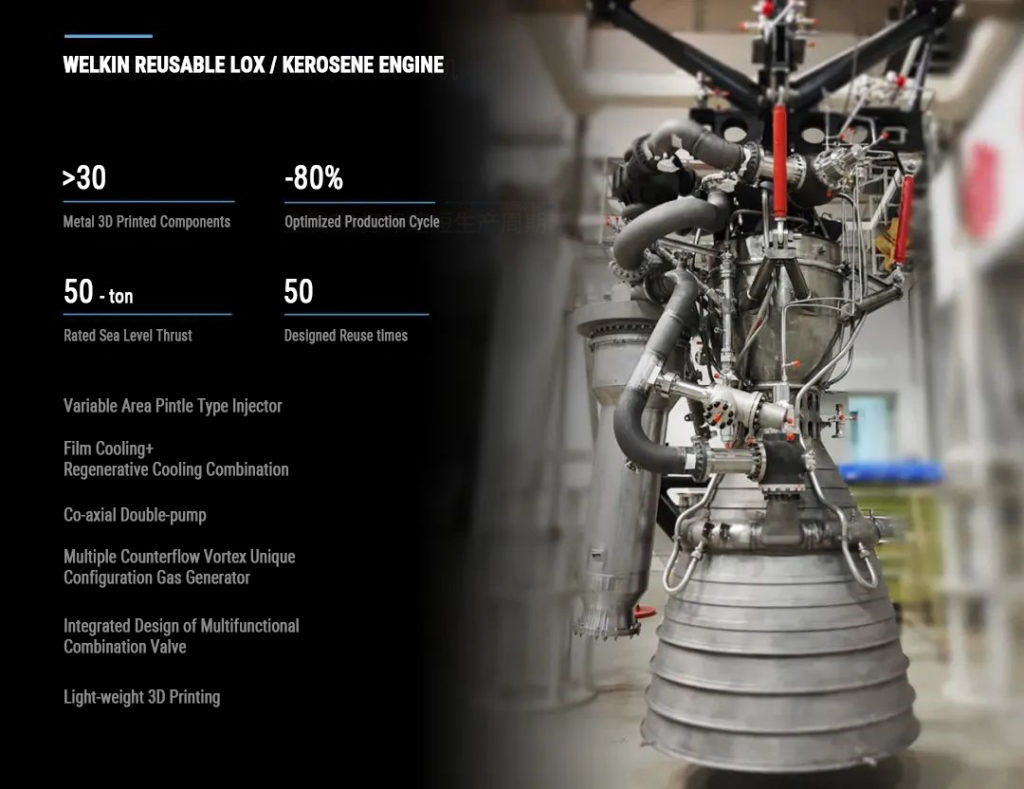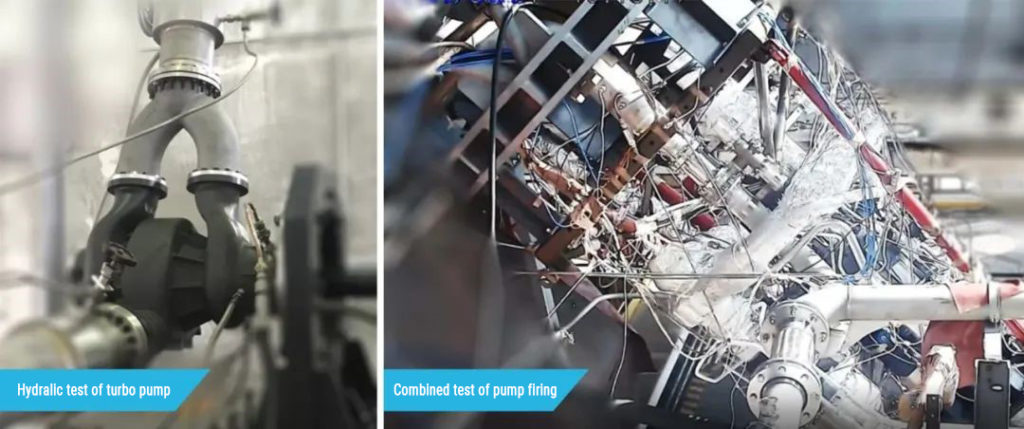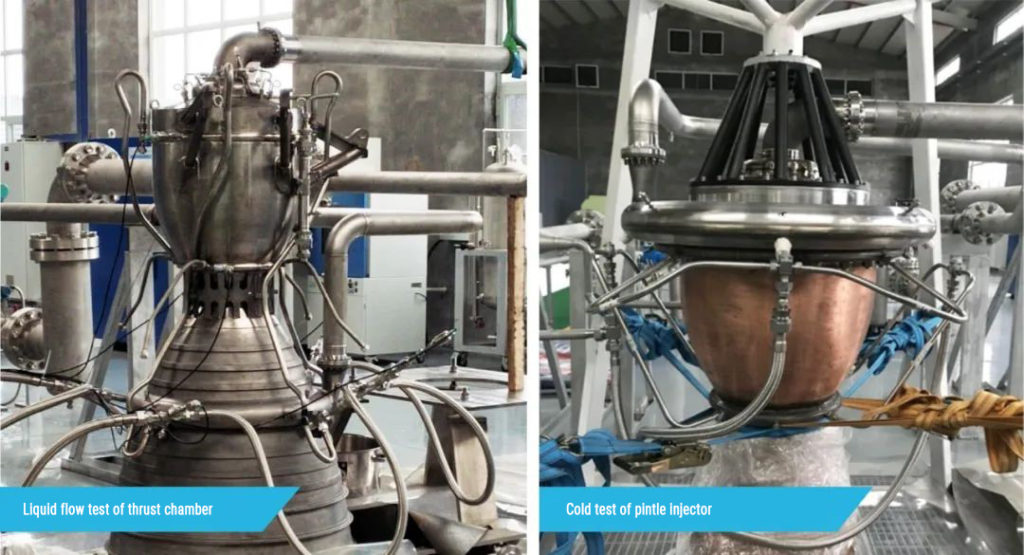In an effort to become China’s SpaceX, Galactic Energy has raised over $188 million in its Series B round and has now commissioned service bureau Falcontech to 3D print over 30 parts for its WELKIN rocket engine.
The company has made progress toward its goal of becoming the premier launch company in the country with the CERES-1 solid propellant launch vehicle, which has been used to launch six satellites so far. It is building on this experience with the development of its Pallas liquid propellant vehicle, to be launched for the first time in 2023. The Pallas has a carrying capacity of five tons and will be designed to be reused up to 50 times. Key to the vehicle is the WELKIN 50-ton Reusable LOX and Kerosene Engine. This is a variable thrust gas generator circulating liquid rocket engine with over 40 tonnes of thrust. The company calls it the Chinese version of SpaceX´s Merlin engine.
As with almost all rocket makers, Galactic has relied heavily on metal powder bed fusion (PBF) to build the WELKIN. One interesting element of the project is that Galactic outsourced 3D printing to Falcontech, unlike Launcher, SpaceX and other U.S. New Space firms, who like to keep 3D printing in house.
The Chinese service bureau is AS9100 certified and has extensive manufacturing operations in Wuxi and other locations. It also has its own EIGA unit for making powder and has been a supplier to COMAC and other aerospace companies. Falcontech has qualified over 28 parts for COMAC´s C919 aircraft, mostly door components. In addition to boasting over 24 L-PBF machines from Farsoon, Falcontech has two huge Concept Laser X lines,10 Renishaw 500Ms, and lots of other equipment. The company is trying to build a super AM mactory with over 50 large-format metal powder bed fusion machines.
Falcontech got the order for 30 parts in 2019 and the company produced them in four months. In addition to PBF, CNC and directed energy deposition were used. The Galactic team said that thrust chamber component takes four days to 3D print, whereas it would take up to 25 days to make with traditional processes, cutting the manufacturing cycle by 80 percent. Moreover, 3D printing the engine led to a reduction in production costs. Additionally, a pump component was made that was five percent more efficient than the previous one. The engine was then assembled and tested, meeting all requirements.
It is remarkable that, in China, a firm like Galactic is content not to build up in-house AM capacity. Yes, it has design teams, but it is divorcing itself from the production. This is a good decision in terms of cost, but will slow its design cycles and may inhibit the firm’s understanding of its own engines. As we’ve heard time and time again—from Domin´s Marcus Pont, NASA´s Paul Gradl, John Barnes, and Launcher’s Tim Berry—design for additive is a team sport, with integrated groups from different specialties working together to holistically optimize material, part and process. You’re not just squeezing the topology lemon to get the most of it. You’re squeezing all constraints and trying to get any and all edge from all the disciplines working together.
On the other hand, Galactic´s approach gives them speed and lower costs. The company does not have to develop its own 3D printing expertise but can rely on that built up in Falcontech. Ultimately ,the design and print in-house approach will give them edge, but perhaps the firm just didn’t have the wherewithal to do it in house at the time. In the coming years, we will see a real separation between firms taking a deep dive in additive and those willing to outsource. In orthopedics, we can already see this. Some asset-light firms just outsource and others, such as Stryker, invest deeply in AM and understanding the process in search of edge. Competitive edge versus capital outlay is something that will be an important decision in space and other heavy users of additive in the years to come.
Subscribe to Our Email Newsletter
Stay up-to-date on all the latest news from the 3D printing industry and receive information and offers from third party vendors.
Print Services
Upload your 3D Models and get them printed quickly and efficiently.
You May Also Like
3D Printing News Briefs, July 2, 2025: Copper Alloys, Defense Manufacturing, & More
We’re starting off with metals in today’s 3D Printing News Briefs, as Farsoon has unveiled a large-scale AM solution for copper alloys, and Meltio used its wire-laser metal solution to...
3DPOD 260: John Hart on VulcanForms, MIT, Desktop Metal and More
John Hart is a Professor at MIT; he´s also the director of the Laboratory for Manufacturing and Productivity as well as the director of the Center for Advanced Production Technologies....
3D Printing News Briefs, June 28, 2025: Defense Accelerator, Surgical Models, & More
In this weekend’s 3D Printing News Briefs, 3YOURMIND was selected to join an EU Defense Accelerator, and PTC has announced model-based definition (MBD) capabilities within Onshape. Finally, a study out...
EOS in India: AM’s Rising Star
EOS is doubling down on India. With a growing base of aerospace startups, new government policies, and a massive engineering workforce, India is quickly becoming one of the most important...




































